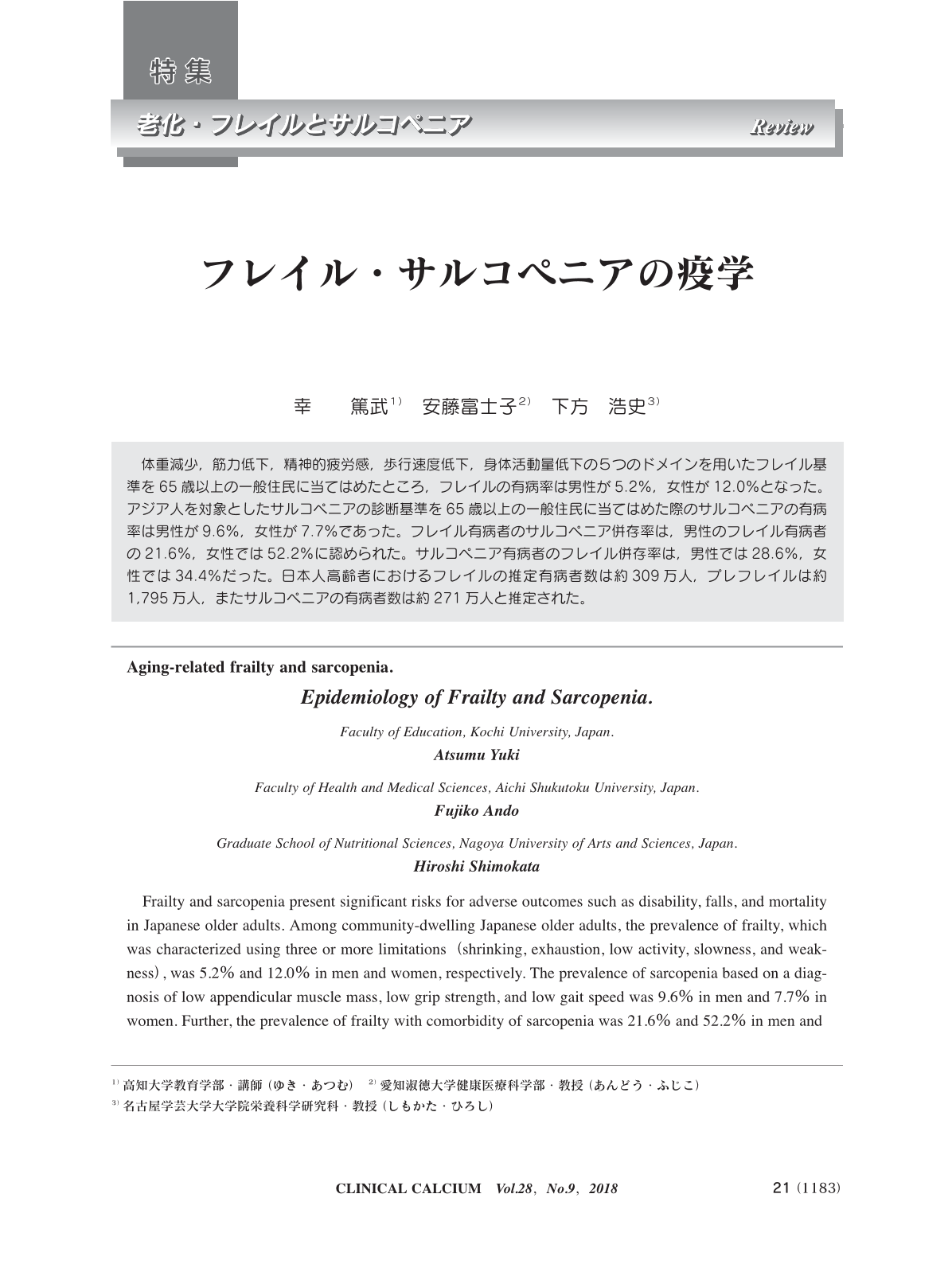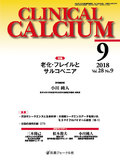Japanese
English
- 有料閲覧
- Abstract 文献概要
- 1ページ目 Look Inside
- 参考文献 Reference
体重減少,筋力低下,精神的疲労感,歩行速度低下,身体活動量低下の5つのドメインを用いたフレイル基準を65歳以上の一般住民に当てはめたところ,フレイルの有病率は男性が5.2%,女性が12.0%となった。アジア人を対象としたサルコペニアの診断基準を65歳以上の一般住民に当てはめた際のサルコペニアの有病率は男性が9.6%,女性が7.7%であった。フレイル有病者のサルコペニア併存率は,男性のフレイル有病者の21.6%,女性では52.2%に認められた。サルコペニア有病者のフレイル併存率は,男性では28.6%,女性では34.4%だった。日本人高齢者におけるフレイルの推定有病者数は約309万人,プレフレイルは約1,795万人,またサルコペニアの有病者数は約271万人と推定された。
Frailty and sarcopenia present significant risks for adverse outcomes such as disability, falls, and mortality in Japanese older adults. Among community-dwelling Japanese older adults, the prevalence of frailty, which was characterized using three or more limitations(shrinking, exhaustion, low activity, slowness, and weakness), was 5.2% and 12.0% in men and women, respectively. The prevalence of sarcopenia based on a diagnosis of low appendicular muscle mass, low grip strength, and low gait speed was 9.6% in men and 7.7% in women. Further, the prevalence of frailty with comorbidity of sarcopenia was 21.6% and 52.2% in men and women, respectively, and the prevalence of sarcopenia with comorbidity of frailty was 28.6% and 34.4% in men and women, respectively. The estimated number of prevalent cases of frailty, pre-frailty, and sarcopenia in Japanese older adults was approximately 3,090,000, 17,950,000, and 2,710,000, respectively.



